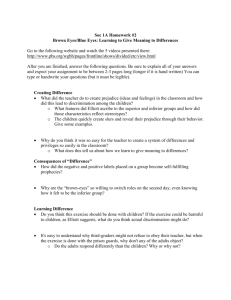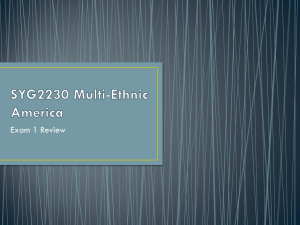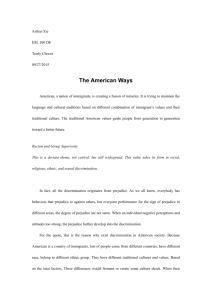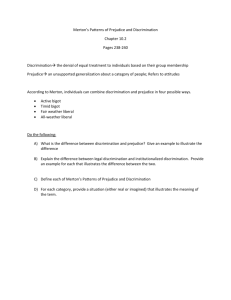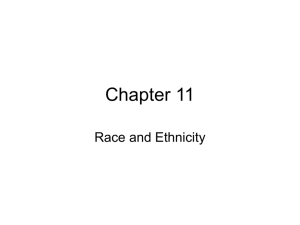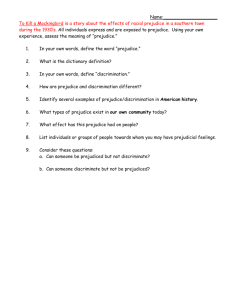Prejudice and Discrimination Prejudice Widely held negative
advertisement
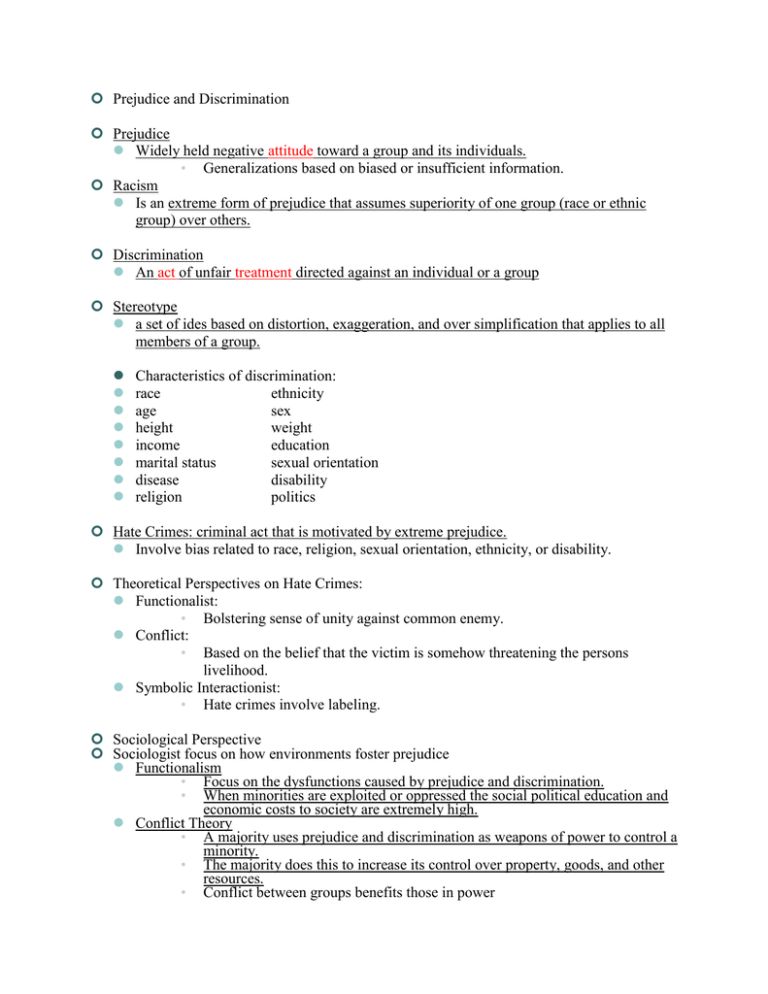
Prejudice and Discrimination Prejudice Widely held negative attitude toward a group and its individuals. • Generalizations based on biased or insufficient information. Racism Is an extreme form of prejudice that assumes superiority of one group (race or ethnic group) over others. Discrimination An act of unfair treatment directed against an individual or a group Stereotype a set of ides based on distortion, exaggeration, and over simplification that applies to all members of a group. Characteristics of discrimination: race ethnicity age sex height weight income education marital status sexual orientation disease disability religion politics Hate Crimes: criminal act that is motivated by extreme prejudice. Involve bias related to race, religion, sexual orientation, ethnicity, or disability. Theoretical Perspectives on Hate Crimes: Functionalist: • Bolstering sense of unity against common enemy. Conflict: • Based on the belief that the victim is somehow threatening the persons livelihood. Symbolic Interactionist: • Hate crimes involve labeling. Sociological Perspective Sociologist focus on how environments foster prejudice Functionalism • Focus on the dysfunctions caused by prejudice and discrimination. • When minorities are exploited or oppressed the social political education and economic costs to society are extremely high. Conflict Theory • A majority uses prejudice and discrimination as weapons of power to control a minority. • The majority does this to increase its control over property, goods, and other resources. • Conflict between groups benefits those in power • Example: African Americans accuse Latinos of using their political clout to wind advantages for themselves. Symbolic Interactionists • Focus on how the labels affect perception and create prejudice. • Labels create prejudice and affects the way we see people. • These labels are learned. • Example: Members of a minority fail because of low expectations they have for their own success. Segregation To separate or isolate from others Creates low self esteem Self-Segregation Minorities requesting to be segregated Prevents interaction with diverse groups Discrimination Individual Discrimination The negative treatment of one person by another person • Primarily and issue between two individuals. Institutional Discrimination Negative treatment of a minority groups through society’s institutions Results from unfair practices that are part of the structure of society and that have grown out of tradition . • Inner city schools • Why are People Prejudice? Psychological Perspective Frustration: People who cannot strike out at the real source of their frustration (low wages) look for someone to blame. Scapegoats: Minorities become the target on which they can vent their frustrations.
